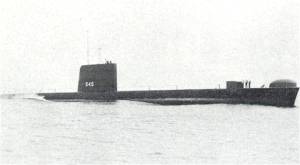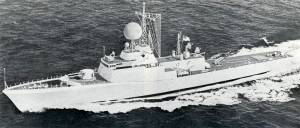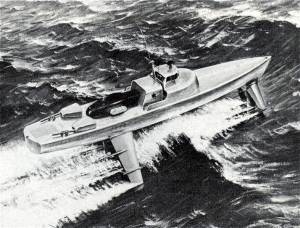The
1960s
The State of the RCN in 1963
Part 8: Future Vessels
Presentation given to the House of Commons on July 9th, 1963 by Vide-Admiral H.S. Rayner, Chief of Naval Staff.
|
|
|
|
|
GENTLEMEN, I have described very briefly the existing fleet and the ships under construction. As I mentioned, the nine Tribal class destroyers and 17 frigates are rapidly reaching the age where it is becoming uneconomical to keep them in commission for much longer. Two Tribals and one frigate have already been replaced by three Mackenzie class escorts.
Between now and 1970, the remaining 26 ships will reach their normal age limit. Our present commitment of 43 escorts is being met by 17 post-war St. Laurent type escorts and the 26 older ships.
In addition to the three overage ships that have already been replaced, a further three ships will be replaced by the last three Mackenzies which will be completed by next year. In order to maintain our commitment at its present level it will be necessary to continue the replacement program to provide modern units.
In this connection, I would like again to refer to the need in the RCN for submarines to train A/S ships and aircraft. SACLANT has indicated that ocean-going A/S submarines, acquired by the RCN to train A/S forces, could also be counted toward NATO force goals, in the ratio of one submarine to one anti-submarine escort. It is for this reason, that we regard submarines as replacement vessels. Approval in principle was given last year for the purchase of three conventional submarines of the Oberon class, subject to satisfactory negotiations with Britain.
|
Figure
15: A British Oberon Class submarine (CN-6433-R)
(Click image for a larger version) |
Figure 15 shows an Oberon submarine. These are the latest conventional ocean-going A/S submarines. They would serve us well for up to 20 years for training and also for several years for A/S operations.
General Purpose Frigate
|
Figure
16: Artisit's drawing of the proposed general purpose frigate.
(CN-6523)
(Click image for a larger version) |
IN MARCH 1962, the government approved the construction of eight General Purpose Frigates (Figure 16) as part of the ship replacement program. These ships would be somewhat larger than the present destroyer escorts, and would give the fleet the versatility which the Tribal destroyers have provided in the past. They would have an anti-submarine capability. They would introduce for the first time into the RCN, surface-to-air guided missile systems for anti-air defence. In addition, the ships would carry a general purpose helicopter and a gun with a good surface-to-surface and shore bombardment capability. They would also be able to carry 200 troops with light equipment and would be capable of landing and supporting those troops in practically any part of the world.
These ships would replace the over-age Tribal class destroyers.
You will appreciate that the men from the older ships would have to receive a good deal of re-training in order to provide them with the skills necessary to maintain and operate the much more complex and modern equipment which would be fitted in this new class of ship. Plans to achieve this are in hand. This is a long term project for, as you know, it takes longer to develop highly skilled and experienced personnel than it does to build a ship.
As the Minister indicated in his opening statement this program is under review.
Hydrofoil—R-200
|
Figure
17: Ocean-going A/S hydrofoil craft under development for
the RCN. Artisit's conception. (CN-6571)
(Click image for a larger version) |
ANOTHER very interesting vessel, for which a contract was recently let to deHavilland is the ASW hydrofoil R-200. Figure 17 shows an artist’s conception of an ocean-going A/S hydrofoil craft. The hydrofoil first appeared at the turn of the century, but it wasn’t until after the Second World War that development started in earnest. Development of this principle has been conducted in various countries including the United States, Italy and the Soviet Union as well as in Canada. No country has yet produced an ocean-going hydrofoil. We hope Canada will be the first to do so. Our effort is complementary to that of the United States. We look upon this project as a development program and we are working on the design for a weapons system for the craft, should it prove to be a useful ocean-going addition to the fleet.
The hydrofoil will be 151.5 feet in length, have a beam of 21.5 feet and a draught of 23 feet in the displacement mode and 7.5 feet when foil borne. In the displacement mode the ship will displace 180 tons and cruise at about 16 knots. She will do over 50 knots when foil-borne. Her crew will be something over 20 personnel.
This Canadian development program, if successful, should place our industry in the forefront of hydrofoil design and construction. It would provide industry with the knowledge, advanced techniques and skills required to meet future national defence requirements and also to compete favourably with other foreign countries.
That
completes a survey of the ships and aircraft we have and expect
to have in the immediate future.
>>> Go to Next Page



